| 1 | Egyptian cobra |
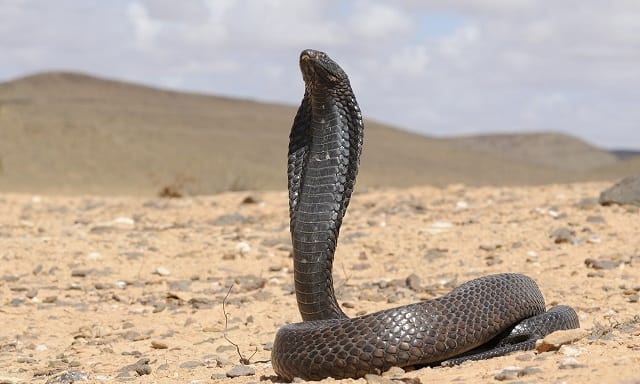
The top defender of Egypt against tomb raiders, mercenaries, and Greek armies pouring over the border. Egyptian cobras regularly surpass 2 metres, reaching a maximum of 2.59 metres, and are a fast-moving, alert snake. They avoid sand deserts, rearing their head in dry grasslands, semi-deserts, steppes, canyons and savannahs. Many superstitions surround them, such as lording over tomb-filled valleys and dealing out the fate of life or death to all who enter.
With an LD50 rating of 0.19mg, Egyptian cobra venom slightly outstrips the Indian cobra (0.28mg). The venom yield is a high 150-300mg, and is able to deplete all antioxidants in the human body, including glutathione and superoxide dismutase. Egyptian cobra venom particularly attacks the liver, causing severe inflammation and the destruction of hepatic cells. It causes a sharp increase in C-reactive protein, a biomarker for inflammation across the entire body.
Egyptian cobra venom has less neurotoxins than some, which interfere with brain signals and cause paralysis, but the venom physically attacks brain cells, leading to neuronal death. Egyptian cobras have paranoid personalities, staying in a rigid stance until you wisely decide to walk away.
| 2 | Black desert cobra |
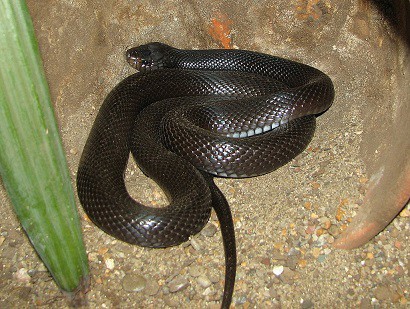
Not a real cobra, but a member of an isolated family called Walterinnesia. This dangerous snake is not only jet black, but nocturnal, most active at the darkness of midnight. The black desert cobra cannot spread a hood, instead enlarging its body by inflating and deflating its lungs. They have a loud hiss, and strike at the enemy from a sideways angle, angling their head towards the ground.
The black desert cobra reaches a maximum of 132cm. Its venom is primarily neurotoxic, triggering paralysis while leaving little trace around the bite wound. However, the black desert cobra can also cause spontaneous haemorrhaging, as the toxins circulate the bloodstream. Like the Egyptian cobra, it is extremely damaging to liver tissue; rats that pulled through and survived still had lesions covering their liver. Bites are rare, but a girl died in Israel after accidentally sitting on one. Without access to medical care, she succumbed 20 hours later.
According to laboratory analysis, its venom potency exceeds the timber rattlesnake and cottonmouth, which score 1.64mg and 2.04mg on the LD50 scale respectively. Black desert cobras score just 0.4mg, requiring much lower quantities to kill a man, mouse, or maybe cactus. This snake is sluggish by day, but rapidly accelerates at nightfall. Black desert cobras inhabit bone dry deserts and rocky mountain ranges.
| 3 | Saharan horned viper |
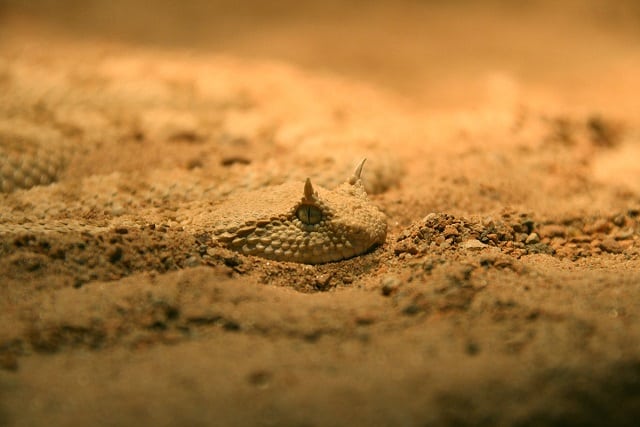
The truest desert dweller of Egypt’s venomous snakes. Saharan horned vipers (Cerastes cerastes) have the ability to live in the sandiest Sahara, effortlessly surfing up sand dunes using a sideways method of motion. This 50cm (max 85cm) species is easily recognised by the soft horns above its eyes, which are theorised to block out the glaring sunlight. Its beige scales are optimised for blending into sand.
Saharan horned vipers are unable to hiss, as this would mean sucking in choking quantities of sand. However, they still warn their foes, instead sidewinding on the spot, to rub their jagged scales together and produce a rasp. This species has a nasty venom which is able to take down the Montpellier snake, three times larger than itself.
According to a Jordanian study, 3% of bites are fatal, with children being most vulnerable. The usual cause of death is kidney failure, and other symptoms include spontaneous bleeding. The signature sensation is feeling as though your heart is being squeezed in a fist. Cerastes cerastes is your number 1 obstacle if your 4 by 4 jeep breaks down in the Sahara desert.
| 4 | Saharan sand viper |
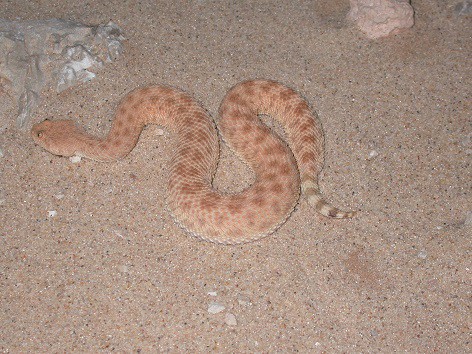
This venomous snake belongs to the same family as the Saharan horned viper, but with one obvious feature missing – the horns themselves. It’s also smaller than its cousin, maxing out at 50cm instead of 85cm. Saharan sand vipers have eyes oriented upwards, rather than forwards. In other ways though, this killer is similar. They have the same craggy desert colour, looking as though the scales are composed of thousands of sand particles.
The Saharan sand viper (Cerestes vipera) also lives in deserts, and also buries itself in order to pounce on prey sneaking past. Its venom is similar as well, causing spontaneous bleeding from the bite wound, and other recent wounds which have only begun to heal. The venom has strong protease powers, cleaving amino acid bonds and destroying skin tissue. There’s also a rare toxin called CV-PL-F, a necrotic myotoxin which destroys muscle tissue.
This venomous species is found across most of North Africa. Remember to keep your multivitamin jar on hand if you’re lost in the desert – a study found that vitamin E could protect against Cerastes vipera toxins.
| 5 | Pyramid saw-scaled viper |
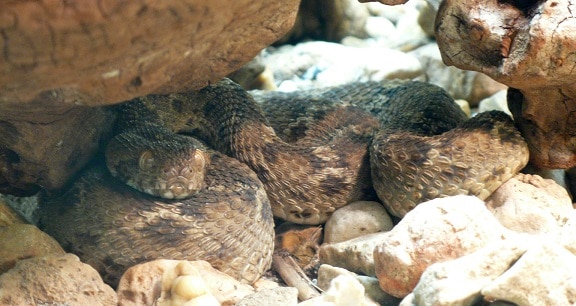
Part of the same Echis family as the notorious Indian saw-scaled viper. They share many characteristics, including a deadly venom stored in their neck glands. This species is particularly widespread in northeast Africa, also including Ethiopia and Sudan. Pyramid vipers avoid true desert, but gravitate towards parched spots such as dry savannah, rocky canyons and semi-desert.
This is a nervous and irritable species which rarely backs down from a fight. They grind their scales together to produce a rhythmical rasp, before launching into a ferocious strike, which mainly aims for the lower limbs. The venom has almost no neurotoxins. Instead, a Saudi Arabian study covering hundreds of bite victims found the following symptoms: vomiting (26.53% of victims), swelling (24.49%), falling blood pressure (14.29%), pain at the bite site (10.20%), and sweating (10.20%). The swelling can travel far beyond the fang marks themselves.
Pyramid vipers average at 30-60cm, but can reach 85cm. You’re most likely to find this venomous snake on rocky surfaces, as that’s where they’re fastest and most agile.
| 6 | Field’s horned viper |
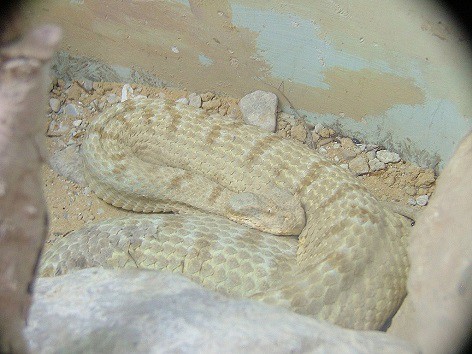
A similar-looking species to the Saharan horned viper, yet with no close relationship. Its desert-blending characteristics evolved completely independently, including the craggy scales and horns above each eye. Field’s horned vipers measure up to 89cm, and have a neurotoxic venom, which acts presynaptically, disabling brain signals before they’re issued. Paralysis can be the result, with the only saving grace being a warning – Field’s horned vipers hiss loudly before lunging into a bite.
This species inhabits northeast Egypt, the Sinai peninsula, while its other ranges include Saudi Arabia, Jordan and Israel. Field’s horned vipers vary in colour, allowing them to blend in with their habitat. In the black lava deserts of Jordan, they’re significantly darker, while in barren Egyptian grassland, they’re lighter, sometimes as pale as pristine beach sand. The camouflage is immense. If you tumbled off a ledge and into a pile of dry rubble, it would be extremely difficult to see a Field’s horned viper lurking.
The horns themselves are one difference. The Saharan horned viper has horns composed of one sharp scale, while with Pseudocerastes fieldi, they’re composed of several smaller scales. The two species probably diverged tens of millions of years ago.
| 7 | Palestinian burrowing asp |
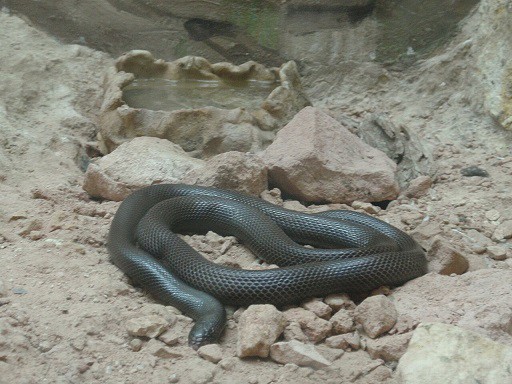
This burrowing snake doesn’t look impressive at all. It’s fully black, with fully black irises that contrast against its black pupils to make the eyes almost invisible. Its head is barely distinguishable from the neck and it only measures 50-70cm, with a maximum of 75cm. But don’t be fooled! The Palestinian burrowing asp (Atractaspis engaddensis) has surprisingly long fangs, which point from their mouth sideways while curving backwards jaggedly. Worse, their fangs can shift position. This snake is able to envenomate a victim with one fang sticking outwards while the rest of its mouth is closed.
The venom itself is nothing to snigger at. It’s capable of severe swelling, which may spiral to gangrene and necrotic skin cell death. Abdominal pain, heavy sweating, heart trouble and nausea are other other possible symptoms. Experiments in mice reveal that the venom specifically targets heart function, using three rare cardiotoxins called S6a1, S6b and S6c. No deaths are confirmed, but a closely related Saudi species caused the death of a 2 year old girl: Atractaspis andersonii.
This might be one of the most obscure deadly snakes in the world. It mostly inhabits eastern Egypt, plus Israel, Jordan, Lebanon and Saudi Arabia.
| 8 | Painted saw-scaled viper |
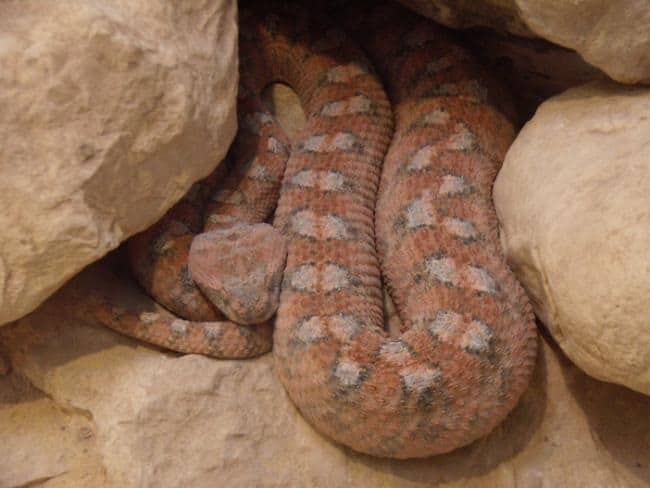
The second saw-scaled viper to live in Egypt. It’s mostly an Arabian species, but strays into eastern Egypt. Arabian saw-scaled vipers also possess a nasty venom, and they also favour dry, rocky environments. Despite similarities to its pyramid cousin, the two species diverged an estimated 19.4 million years ago. The creation of the Red Sea is believed to have split them into islands, with the Arabian continental plate ripping from Africa and gradually grinding north-eastwards into Eurasia. Over many eons, the two diverged, with Echis coloratus forced eastwards into Arabia, before eventually recolonising Egypt by slithering northwards.
The two have different patterns, as painted saw scaled vipers have grey-red markings down their spine like a tapestry, while the pyramid saw-scaled viper has giraffe shades. Echis coloratus lacks the arrow shaped marking on its head, possessed by most Echis members. It’s also slightly longer, maxing out at 90cm. Its venom is less deadly, as only one death has been recorded since 1919, an Israeli man who succumbed to kidney failure. The effects of the venom are similar though – mostly local swelling and spontaneous haemorrhaging.
| 9 | Hissing sand snake |
A 100cm serpent which differs to our other venomous snakes. Rather than glands connected to front fangs allowing for instant venom injection, this species has a Duvernoy’s gland which produces venom from enlarged rear fangs. This venom must be chewed repeatedly into an open bite wound.
Generally, rear-fanged snakes aren’t too dangerous, causing painful swelling at worst (the red-necked keelback is an exception). However, hissing sand snakes have particularly large glands. Death has never been reported, but there are many blank pages in the long history of Egypt. This snake chases its prey down, holds them in coils, and chews for approximately 1 minute to subdue them. They also inhabit Ethiopia and Sudan.
Hissing sand snakes reach a maximum of 175cm, and have a variable personality. Some will calm down after a few weeks of captivity, but some never lose their irritable and aggressive nature. In Egypt, they live in dry semi-deserts, but also cultivated areas, and well vegetated shores along the river Nile. Their cousin Psammophis schokari replaces them in true deserts. Hissing sand snakes also have nasal glands which produce a lipid-rich secretion, which they rub onto their scales, for reasons unknown. According to breeders, this is a pet snake that should be viewed from a distance, preferably behind glass.
| 10 | Nubian spitting cobra |
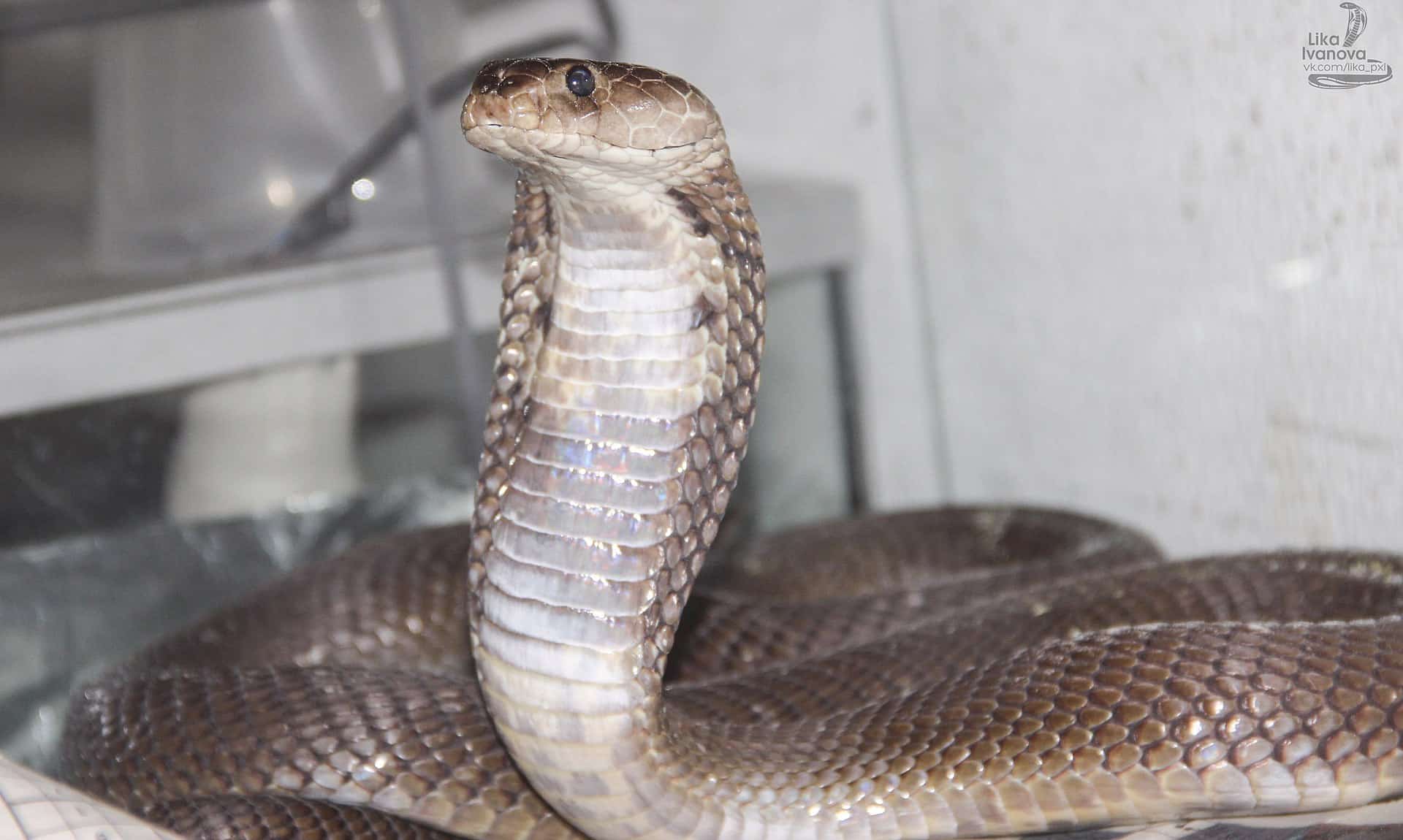
This only became an official species in 2003, as it was first lumped under the black-necked spitting cobra umbrella, and then filed as a red spitting cobra. Nubian spitting cobras (Naja nubiae) live in southern central Egypt, crossing the border into Sudan. It has the same tear drop marking below the eye as the red spitting cobra, but its body is a rustier brown.
Nubian spitting cobras prefer moister habitats than nearby venomous snakes. This is shorter than the Egyptian cobra it overlaps with, and has a rounder head which is more separated from the neck. They average at 1.2 metres, with a record of 151cm (versus the Egyptian cobra’s 259cm). The obvious advantage is that they can spit venom in your eye. Like other spitting cobras, their brains are adapted to pick up two round eyes side by side, as proven by studies which drew fake eyes onto objects.
The bite is equally deadly. Spitting cobras generally have cytotoxic venom which causes massive tissue destruction surrounding the bite wound, and according to a 2015 study, Naja nubiae is no exception. Necrosis and amputations are possible symptoms. The upside was that it was neutralised by 4 antivenoms from around the world, meaning that its toxins weren’t particularly unique. Meanwhile, the painted saw-scaled viper was only partially neutralised.
